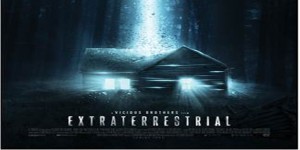Synopsis:
Best friends Woodrow and Aiden spend all of their free time building Mad Max-inspired flamethrowers and muscle cars in preparation for a global apocalypse. But when Woodrow meets a charismatic young woman and falls hard in love, he and Aiden quickly integrate into a new group of friends, setting off on a journey of love and hate, betrayal, infidelity and extreme violence more devastating and fiery than any of their apocalyptic fantasies.

Between touching scenes of teenage love, life is filled with booze, beer, some more booze and a couple of fights. The waters finally become murky and filled with blood as Woodrow, the spurned lover, has a gore-filled revenge fantasy while looking at a box of personal effects to be delivered to his now ex-girlfriend. Flames dance, blood flows and brains are splattered in slow-motion glory only to be wiped out with a fade-to-black. At the end, we’re left wondering what, if any, of the events in the movie regarding the post-apocalyptic fantasy ever happened. The teenage love story might have been effective with teenagers involved.
The true success of the story is, I believe, unintentional; even ironic. These early adults are nothing more than early teenagers, with petty teenager’s ambitions and overwrought, melodramatic reactions to life. Want to get to know somebody but are kind of shy? Get everybody smashed! Feeling bad about yourself and what somebody did to hurt you? Get smashed! Feel really angry at somebody for how they hurt you? Pile their stuff on the lawn and take a flamethrower to it! The entire cast came off as unsympathetic, whiny, self-indulgent and immature.
If you’re a lover of film or photography, however, there is plenty to enjoy. All of the cameras were purpose-built for Bellflower. The heavy (sometimes too heavy) use of selective focus, either via a bellows or variable-focus lens, can be breathtaking. There are very few scenes in the film that are 100% in focus, and the judicious use of shallow depth of field makes for some truly stunning shots.
As a photographer, I found myself constantly looking at a scene and wondering how to capture it as a still. If anywhere, this is where the true greatness shines through. From the highway follow-shots using a tilt-shift lens to make the car appear to be a miniature to the sudden shift from a bright, sunlight day to an f10 (or higher) neutral density filter — without cutting — to let the flamethrower truly speak, the cinematography is stunning from both a motion- and still-photography perspective.
If you’re a lover of film, cinematography or photography, there’s plenty in this movie to look at in wonder. If you enjoy a more complete package, you might want to skip it.
Rating: 2 stars out of 5




